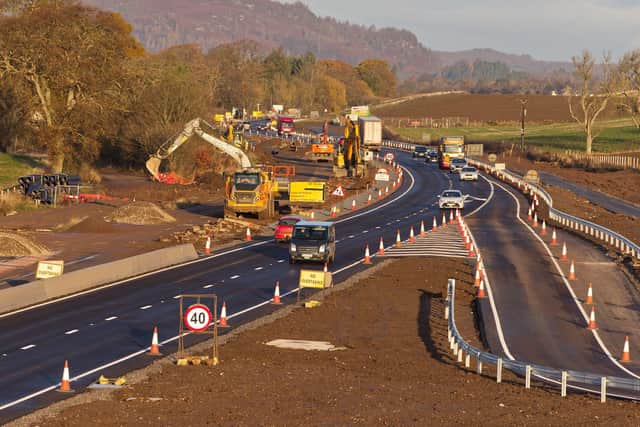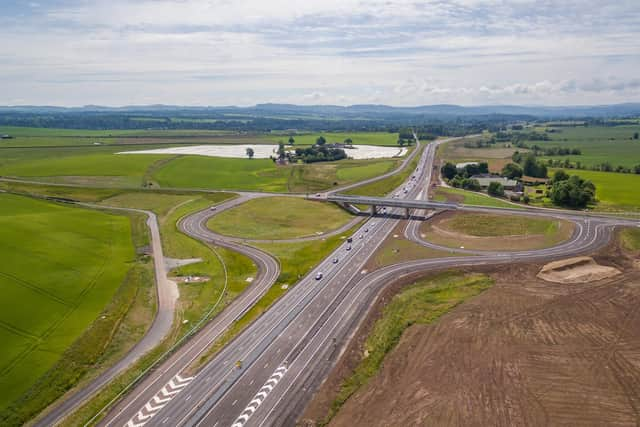Five times as many drivers caught by A9 roadworks cameras than on rest of Dunblane-Inverness route
The 1,681 detected in a six-mile temporary 40mph zone through the roadworks at Bankfoot, north of Perth, between April and June compared to 333 over the rest of the system, which covers more than 100 miles.
It comes as the newly dualled £96 million Luncarty to Pass of Birnam section of the road was due to open in stages yesterday and today and be fully open by Monday.
Advertisement
Hide AdAdvertisement
Hide AdFigures from Safety Cameras Scotland showed 969 motorists received fixed penalty notices (FPNs) for speeding through the roadworks and a further 178 were reported to the procurator fiscal, including for more serious breaches.


That compares to 201 FPNs and 32 fiscal referrals for the rest of the A9 average speed camera system, which covers single-carriageway sections between Perth and Inverness and the Dunblane-Perth dual carriageway.
The Scottish Government body said the other drivers detected speeding were not pursued for a variety of reasons.
A spokesperson said: “We were disappointed by the high number of offences detected by the average speed system on the A9 at the Bankfoot roadworks.
"Time and time again we find that reduced speed limits result in a lower level of speed compliance.


"This is why it we feel it is important to enforce at roadwork locations to help ensure the safety of road workers and all road users.'”
Neil Greig, the Scotland-based policy and research director of the IAM RoadSmart motoring group, said: “Speeding through roadworks puts road workers’ lives at risk and leads to unnecessary incidents and further delays.
"However, these numbers highlight a communication failure by Transport Scotland to inform drivers that the limits in roadworks are being enforced in the same high-tech way as elsewhere.
Advertisement
Hide AdAdvertisement
Hide Ad"We know from the rest of the A9 that average speed cameras are really effective in doing their primary job of keeping everyone within the speed limit, so much clearer signposting is needed to show they are still active in roadworks.”
The new dual carriageway is only the second of 11 stretches of the A9 between Perth and Inverness to be widened since the SNP pledged to upgrade the route 13 years ago.
A subsequent pledge to complete the work by 2025 at an estimated cost of £3 billion looks increasingly unlikely since only 11 miles of new carriageway have been finished, with a further 72 miles to go.
Transport Scotland told Scotland on Sunday a “market consultation exercise” with the construction industry over how to finish the job was due to be completed within weeks, which would “inform decision making on our procurement approach and phasing”.
It said ministers remained committed to the project, which has escaped the axe under the new SNP-Scottish Greens power sharing agreement.
An industry source said at least some of the remaining sections might be combined in a private finance deal that could involve contractors also maintaining them after they were built.
Work on the next stretch, six miles between Moy and Tomatin, south of Inverness, is not expected to start until the second half of next year.
